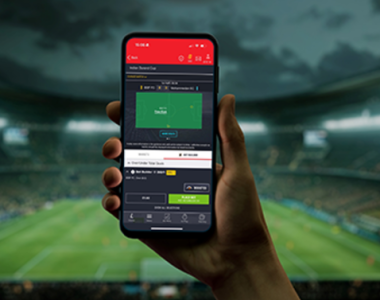
Ever heard the phrase, “You win some, you lose some”? Well, in football betting, it’s more like, “You win some, you lose some, but at least there are goals!” Betting on Over/Under markets is one of the most popular ways to shake things up while enjoying the beautiful game. But if you’re thinking, “Over/Under what exactly?”—no worries, we’ve got your back.
This blog will break down the art of betting on goal markets in football, showing you how Over/Under bets work, why they’re worth your money, and also provide top tips to keep you ahead of the game (and the bookies).
What Are Over/Under Markets?
Now, let’s start with the basics. Over/Under soccer betting is all about predicting the total number of goals scored in a match—by both teams combined. Instead of picking who will win, you’re putting your money on whether the game will have more or fewer goals than a preset number.
For example, a typical Over/Under market might look like this:
- Over 2.5 Goals
- Under 2.5 Goals
Here’s how it works:
- Over 2.5 Goals means you’re betting on there being at least three goals in the match (3, 4, 5, or more).
- Under 2.5 Goals means you’re betting on two goals or fewer in the match (0, 1, or 2).
And why “.5”? Don’t worry—there’s no such thing as half a goal in football. It’s just a neat way to avoid confusion so there are clear winners or losers.
Why Bet on Over/Under Markets?
Before slapping your hard-earned cash down on Over/Under bets, you might be wondering, “Why bother?” Here’s why:
- It’s All About the Goals – Let’s face it, goals are the best part of football! This kind of betting adds extra excitement to every shot, free kick, and corner.
- No Need to Pick a Winner – Forget agonizing over who’s going to win the match; this market lets you focus on the action instead.
- Simple for Beginners – There’s no complex math or obscure stats needed to get started—it’s straightforward and easy to understand.
- Variability – Depending on how risky you’re feeling, you can bet on Over/Under 0.5, 1.5, 2.5, or even a different number of goals altogether.
Factors to Consider Before Betting
If goal betting was as simple as predicting a high or low-scoring affair, we’d all be retired by now. But here’s the catch—there’s no crystal ball. What you can do, though, is stack the deck in your favor with these key considerations.
1. Style of Play
- Does each team play attacking, “gung-ho” football, or do they park the bus like Mourinho’s Chelsea in 2005?
- High-press, attacking teams are more likely to score (and concede goals), but defensive-focused teams could bore you to a 0-0 draw faster than a snoozefest Netflix doc.
2. Recent Form
Check recent match stats. Have they been banging in the goals lately or struggling to hit the target? Teams in hot form are more likely to contribute to goal-heavy games.
3. Head-to-Head Record
History matters. Do these two clubs usually deliver high-scoring encounters, or do their matches fizzle out? Look it up—it’s often a good clue on what to expect.
4. Injuries and Suspensions
If the star forward or top goalkeeper is out, that could dramatically tilt expectations. Missing key players can make or break bets.
5. Weather and Pitch Conditions
Yes, we’re going full nerd. Wet, windy conditions on a dodgy pitch can grind goal-scoring chances to a halt. But a crisp, sunny afternoon on a flawless turf? Bring on the goals!
6. Competition Context
Are the teams gunning for survival or silverware? A high-stakes match often leads to more drama and, consequently, goals. But meaningless end-of-season games? Yawn.
How to Bet Smarter on Over/Under Markets
Now that you’ve got the basics and know the factors to consider, here’s how to take your Over/Under betting game to the next level.
1. Use Statistics to Your Advantage
Data is your best mate here. Check out team stats like average goals scored and conceded per game. Handy tools like Opta stats or soccer betting prediction sites often provide these for free.
2. Explore Alternative Goal Lines
Don’t limit yourself to the classic 2.5 goals. Bookies offer more options like Over/Under 0.5, 1.5, 3.5, or higher. Keep in mind that the bigger the number, the higher the risk—and reward.
3. Live Betting on Goals
Love the rush of in-play betting? Over/Under markets in live matches are perfect. If the game’s a slow burner, you might bag higher odds by waiting a few minutes before placing your bet.
4. Avoid Emotional Bias
Are you betting on your beloved team? Bad move, mate. Your die-hard love for the club might cloud your judgment. Bet with your head, not your heart.
5. Set a Realistic Budget
Here comes the boring but essential advice—don’t go overboard. Set limits, stick to them, and never bet more than you can afford to lose.
Example Scenarios
To give you an idea of how you might approach Over/Under markets, here are some hypothetical matchups and bets you could consider.
- Fixture: Manchester City vs. Burnley
- Likely bet? Over 2.5 Goals. Why? Pep Guardiola’s side can dismantle just about any defense, often scoring 3+ goals by halftime.
- Fixture: Atletico Madrid vs. Getafe
- Likely bet? Under 2.5 Goals. Why? Diego Simeone’s Atletico play rigid, clinical football, and Getafe aren’t exactly free-scoring.
- Fixture: Liverpool vs. Leeds
- Likely bet? Over 3.5 Goals. Why? With Leeds conceding goals like it’s a pastime and Liverpool’s potency in attack, this has goal-fest written all over it.
It’s Your Call
Betting on Over/Under markets can turn even the dullest mid-table clashes into edge-of-your-seat thrillers. Remember, like any form of betting, it’s not a guaranteed money maker. Treat it as a bit of fun, do your homework, and enjoy the ride.




